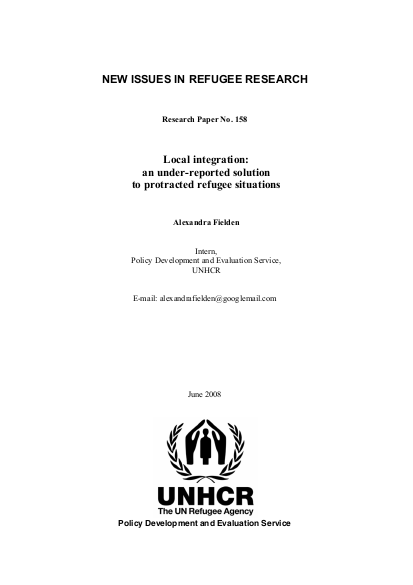
Local integration has a largely unrecognized potential to resolve the plight of refugee populations across the globe, many of whom have been living in exile for years on end. In recent years there has been relatively little attention paid to the process of local integration and its consequences for refugees and their hosts. This can perhaps largely be attributed to voluntary repatriation being the globally preferred refugee policy.1 An initial distinction to be drawn is the difference between local integration in the country of first asylum and integration in a third resettlement country. It is relatively common for resettled refugees to obtain citizenship in the receiving (usually industrialized and wealthy) state, but exact figures are difficult to obtain.2 This paper will seek to examine and highlight the role of local integration as a durable solution to refugee influxes in countries of first asylum, which are generally developing or transitional societies. It concludes that local integration is actually not a forgotten solution,3 but an undocumented one. It is also suggested that local integration has great potential as a solution where repatriation or resettlement are not viable options; particularly in protracted refugee situations. Although local integration has been termed a “non-solution”,4 examples are in fact numerous enough to be worthy of synthesis. This document seeks to provide an inventory of local integration case studies from all continents. It must be noted that each local integration process has had varying degrees of success, but an in-depth analysis and evaluation of each is beyond the scope of this paper. The inventory aims to provide a crucial starting point for further research into local integration, and its future role in international refugee policy.